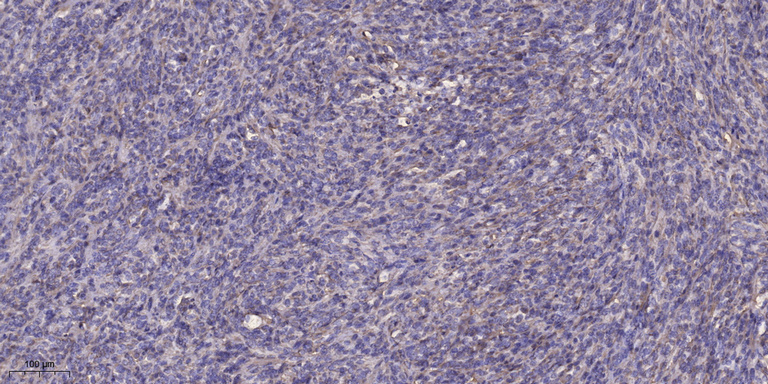产品名称
CA VIII Rabbit Polyclonal Antibody
别名
CA8; CALS; Carbonic anhydrase-related protein; CARP; Carbonic anhydrase VIII; CA-VIII
蛋白名称
Carbonic anhydrase-related protein
存储缓冲液
Liquid in PBS containing 50% glycerol, 0.5% BSA and 0.02% New type preservative N.
Human Gene Link
http://www.ncbi.nlm.nih.gov/sites/entrez?db=gene&term=767
Human Swissprot No.
P35219
Human Swissprot Link
http://www.uniprot.org/uniprotkb/P35219/entry
Mouse Gene Link
http://www.ncbi.nlm.nih.gov/sites/entrez?db=gene&term=12319
Mouse Swissprot No.
P28651
Mouse Swissprot Link
http://www.uniprot.org/uniprot/P28651
Rat Gene Link
http://www.ncbi.nlm.nih.gov/sites/entrez?db=gene&term=297814
Rat Swissprot Link
http://www.uniprot.org/uniprot/Q5PPN4
免疫原
Synthesized peptide derived from the Internal region of human CA VIII.
特异性
CA VIII Polyclonal Antibody detects endogenous levels of CA VIII protein.
稀释度
IHC-p: 100-300.WB 1:500 - 1:2000. ELISA: 1:40000.. IF 1:50-200
宿主
Polyclonal, Rabbit,IgG
背景介绍
The protein encoded by this gene was initially named CA-related protein because of sequence similarity to other known carbonic anhydrase genes. However, the gene product lacks carbonic anhydrase activity (i.e., the reversible hydration of carbon dioxide). The gene product continues to carry a carbonic anhydrase designation based on clear sequence identity to other members of the carbonic anhydrase gene family. The absence of CA8 gene transcription in the cerebellum of the lurcher mutant in mice with a neurologic defect suggests an important role for this acatalytic form. Mutations in this gene are associated with cerebellar ataxia, mental retardation, and dysequilibrium syndrome 3 (CMARQ3). Polymorphisms in this gene are associated with osteoporosis, and overexpression of this gene in osteosarcoma cells suggests an oncogenic role. Alternative splicing results in multiple transcript variants. [provid
信号通路
Nitrogen metabolism;
功能
function:Does not have a carbonic anhydrase catalytic activity.,similarity:Belongs to the alpha-carbonic anhydrase family.,
纯化
The antibody was affinity-purified from rabbit antiserum by affinity-chromatography using epitope-specific immunogen.

